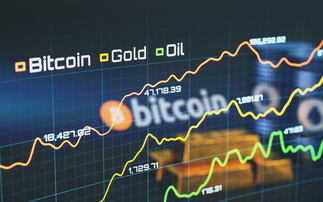
Ritu Vohora (pictured), investment specialist at T. Rowe Price
Safe-haven assets, traditionally viewed as stable investments amid economic turmoil, are undergoing a historic transformation.
Gold has seen an unprecedented surge despite higher bond yields, defying typical correlations.
US Treasuries and the US dollar - normally the go-to choices for stability in risk-off environments - are also not behaving as expected. Treasury yields are elevated and remain incredibly volatile, while the dollar has declined.
It is a puzzling time for investors. Traditional relationships between asset classes are breaking down.
Gold price hits 25 record highs in 2025 so far
This divergence signals a recalibration of financial dynamics driven by geopolitical realignments, fiscal and monetary policy actions, inflationary pressures and a changing macro landscape.
But rather than trying to forecast how the dust will settle, investors should step back and reconsider long-held assumptions about safe havens. Diversification and risk management in portfolio construction are as important as ever.
US exceptionalism doubts
Recent US policy shifts may be reshaping the outlook for investing in both the US economy and dollar assets.
After a decade of American exceptionalism, simultaneous selloffs in US equities, bonds and the dollar are a rare signal of declining confidence in US leadership.
Yields on long-duration Treasuries have risen, atypical behaviour during risk-off environments.
Negative supply dynamics in the Treasury market offer some explanation, having worsened market liquidity and added to concerns about debt sustainability.
The US government has issued $2.3trn in new debt annually since 2020, while regulations have constrained bond dealers' balance sheets - a scenario akin to funnelling traffic from a busy four-lane highway into a single lane.
Friday Briefing: There's no such thing as a safe haven in markets
Furthermore, political instability and a more protectionist US government are raising questions about the faith and trust in America's institutions.
Meanwhile, policies on tariffs and immigration raise the risk of stagflation in the US, which further diminishes their appeal.
These structural changes suggest that, while US government debt still offers risk-hedging potential, it may not be as universally reliable as in the past.
Unshakeable dollar tested
For now, there are few challengers to the US dollar's position as the world's reserve currency.
Still, erratic policies, trade tensions and fiscal issues in Washington have caused some investors to question the long-term safe-haven status of the dollar, one of the few assets that was consistently defensive through the post‑global financial crisis and post-Covid periods, including 2022.
The waning perception of US exceptionalism is leading investors to diversify into other currencies like the Swiss franc, euro and Japanese yen, which are increasingly seen as safer alternatives.
Managing multiple risks
Today, investors need to manage multiple directions of risk from high inflation, stagflation, low growth (or recession) and changing market leadership.
Short-term US Treasuries are still the best diversifier for growth risks but are not as effective in an inflationary shock. High-quality German bunds have been less volatile than their US counterparts and, with stable governance, are gaining traction as a viable haven alternative.
Real asset equities and short-term inflation-protected Treasuries can act as effective hedges against rising inflation.
Kepler Partners' Josef Licsauer: Ways to play the gold rally
Gold has made record highs and its outperformance relative to sovereign debt represents a significant market signal. Fuelled by aggressive central bank purchases and a fundamental flight to stability, it remains a haven due to its negative correlation with stocks and bonds, serving as an inflation hedge and a store of value.
And while it remains a strong diversifier, it is prudent to broaden exposures to other assets to create a well-rounded portfolio that can manage risk and drive returns.
While declining short-term interest rates lessen returns for money market funds, these funds remain appealing due to their ability to provide capital preservation, liquidity and stability.
Similarly, cash remains a defensive asset class. The significant increase in yields since the zero-interest-rate environment has made cash far more attractive in recent years but investors should remain mindful of the opportunity cost associated with holding it.
In a traditional growth shock, defensive sectors like consumer staples, healthcare and utilities tend to outperform the broader market.
Healthcare offers promising opportunities due to secular tailwinds from an aging population and radical innovations. However, regulatory issues and the risk of tariffs in areas like pharma mean strong fundamental analysis of individual companies is essential to navigating the sector.
Alternative investments, such as cryptocurrencies, private assets, art and fine wine, are gaining traction as investors seek diversification. While some may provide attractive risk-adjusted returns for long-term investors, they can be speculative and illiquid.
Hedged equity - incorporating low-volatility stocks or a range of option strategies - can help limit downside potential in various risk-off environments. However, the cost of implementing these strategies is a crucial consideration.
The tectonic shifts taking place in the macro landscape necessitate a re-evaluation of traditional safe-haven assets. Diversification across a broader range of exposures is essential to effectively manage rising risks, create resilient portfolios and drive returns in today's complex environment.
Ritu Vohora is an investment specialist at T. Rowe Price














